EK-Loop FPT fans
The EKWB Vardar fans are now discontinued, but there is a replacement in the form of fans from the new FPT series. These are designed primarily for what this company is most dedicated to – custom loops. Along with high airflow, the specs promise high static pressure, which is key on obstacles such as radiators to achieve the highest possible cooling efficiency (air performance to noise level ratio).
The new EK-Loop FPT fans come in two formats (120 and 140 mm), each with three variants. One is in all-black, without LEDs (FPT 120 – Black) and two variants are with LEDs. Both have a milky rotor that guides the light well from the ARGB LEDs placed traditionally on the PCB at the hub.
The illuminated fan can have a black frame (EK-Loop Fan FPT 120 D-RGB – Black) or a white frame (EK-Loop Fan FPT 120 D-RGB – White). That should be the only design difference. All 120 mm FPT fans (including the non-LED one) have a super wide speed range of 550–2300 rpm, and the claimed airflow is the same for every model, 130.82 m³/h and the static pressure is 2,7 mm H2O.
Fans in the 120-millimeter format don’t usually reach such parameters, but that’s because of the typically lower speeds. So we can assume that at maximum speeds (which are covered by the manufacturer’s performance parameters), EK-Loop FPT fans will be some of the noisiest. What is naturally important is their profile at lower speeds at the same noise level that can be set for competing fans. We’ll get to that comparison sooner or later in our tests.
For wider radiators, EKWB has simultaneously released 140 mm FPT fan models. In the same three variants (all-black w/o ARGB LED, black w/ ARgB LED and white w/ ARGB LED) as in the case of 120mm models.
The difference is a slightly narrower operating speed range (600–2200 rpm), but with higher airflow, as the 140mm fans have a larger active cross section. The former is said to be up to 200.5 m³/h, valid for all three variants, and at the same noise level, which is quoted with precision to two decimal places.
This means that either EKWB fine-tuned the properties of the materials used to achieve the same strength in the non-illuminated variant as in the illuminated ones, or these parameters are traditionally calculated with a tolerance similar to, for example, Corsair AF120 fans, where the model with a white rotor is a bit noisier than the black variant due to the slightly different characteristics of the blade undulation.
The EK-Loop fan blades are shorter than usual for this geometry with their more pronounced curved leading edges and narrower width. This, combined with the more flexible material (PBT?), is advantageous for lower torque undulation and thus less vibration, which may not even significantly stimulate resonant frequencies in the sound.
On the other hand, the blades are also smaller and do not fill a relatively large cross-sectional area. This “null” space naturally reduces the static pressure and thus the airflow through an obstacle is lower. But the airflow to noise ratio can still be very attractive.
The bearings used are always liquid (FDB), and at an operating temperature of 25℃, the average service life should be 60,000 hours. Interestingly, the fans use a rather unconventional 8-pin connector on a short cable for more convenient daisy chaining of multiple fans in series. However, the package includes an adapter that already has a standard 4-pin on one of the ends to power the motor and a 3-pin to connect the ARGB/D-RGB LEDs.
Fans are now available in stock in the EKWB e-shop starting from 17 EUR for the 120 mm model without LEDs. Most models cost 22 EUR (both 120 mm models with LEDs and 140 mm fan without LEDs), 140 mm fans with ARGB LEDs are available for 25 EUR.
English translation and edit by Jozef Dudáš
- Contents
- EK-Loop FPT fans






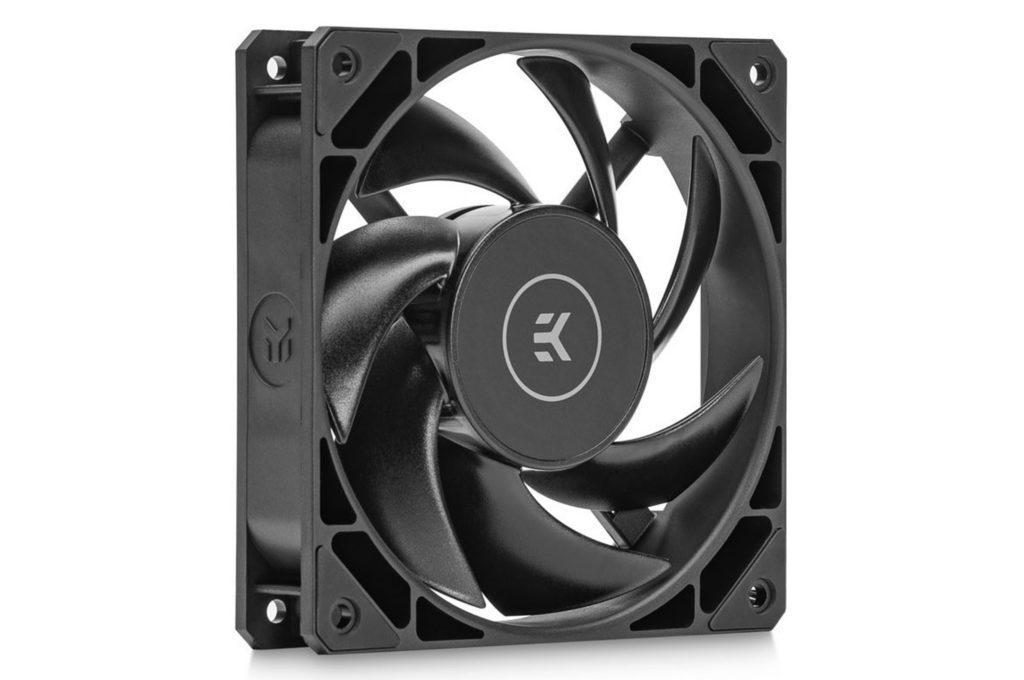
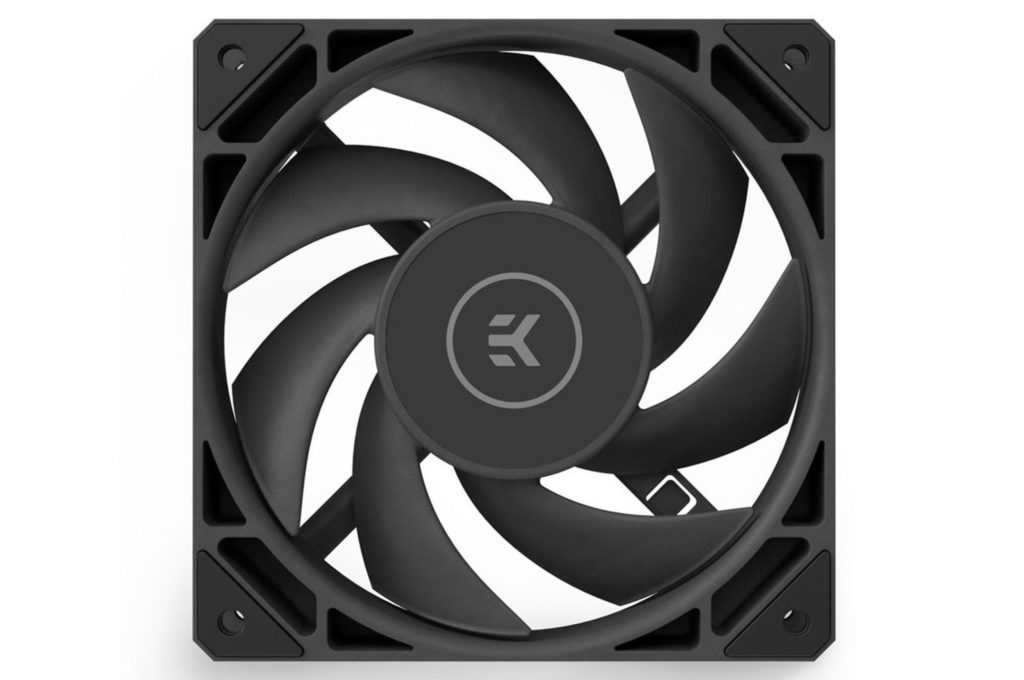


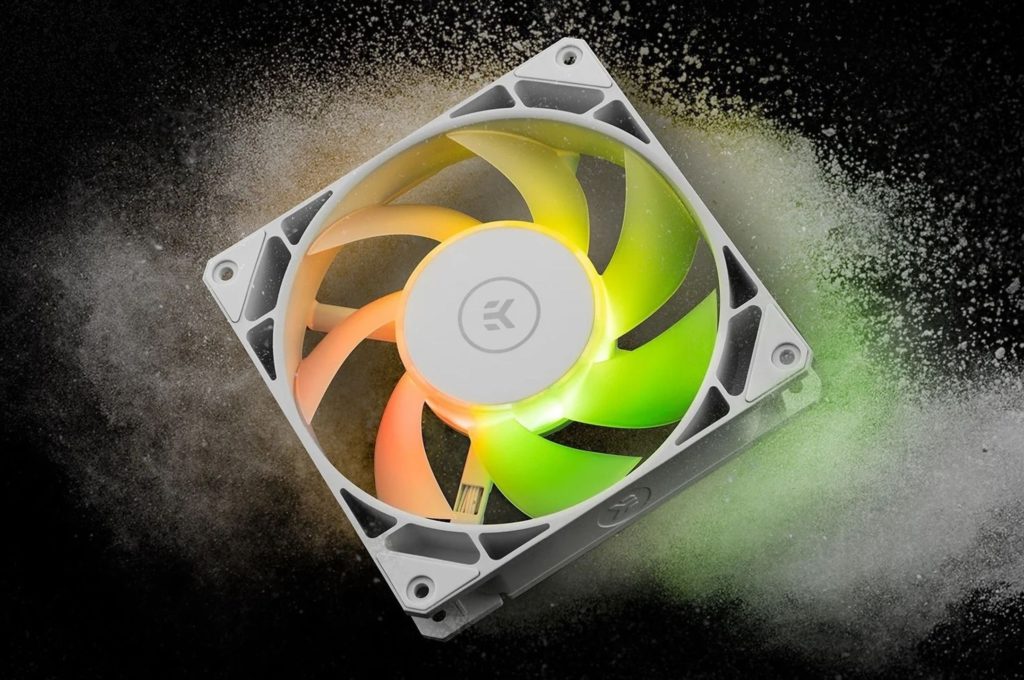
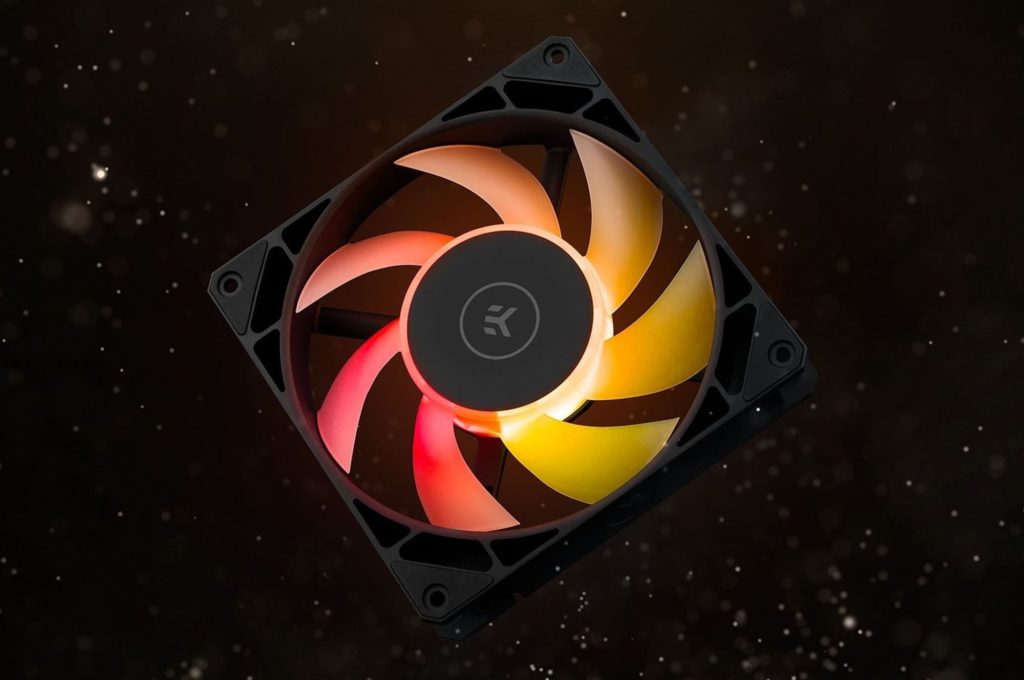
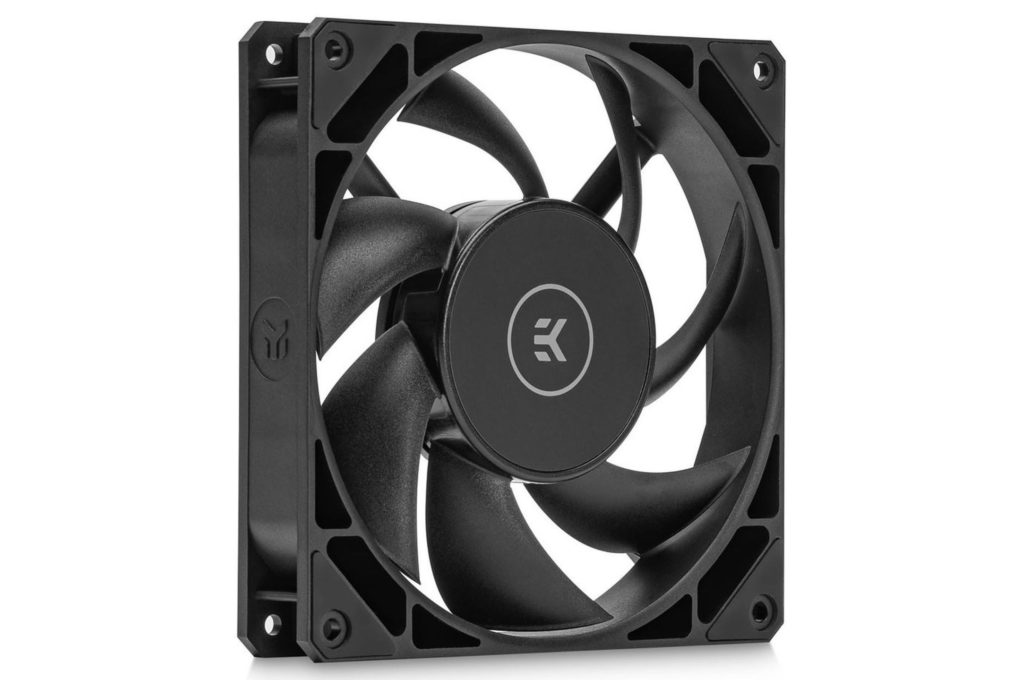
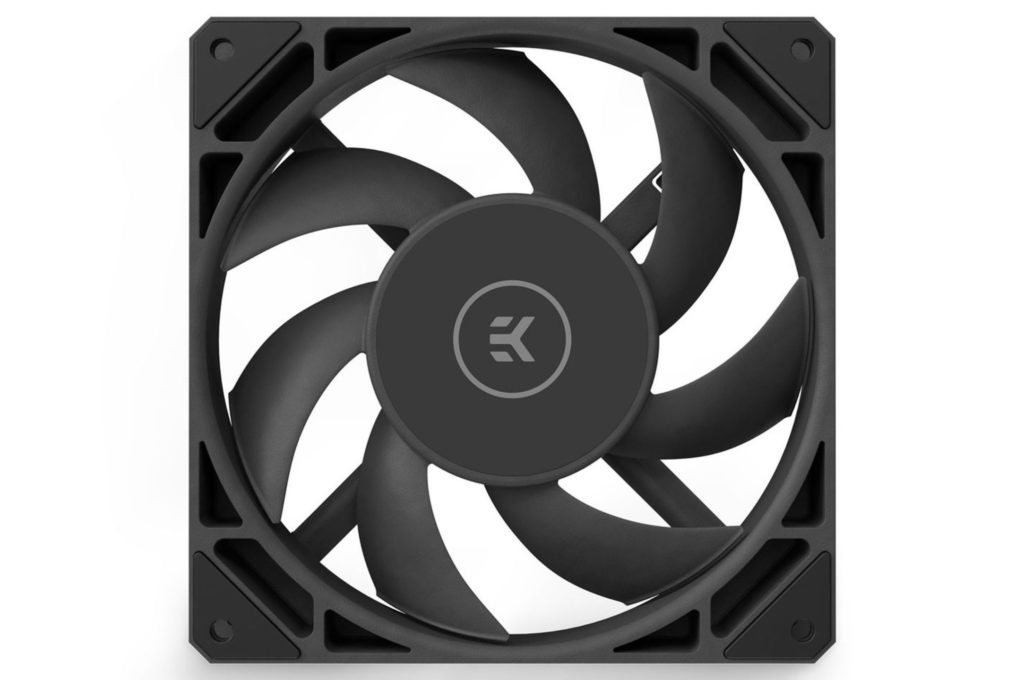
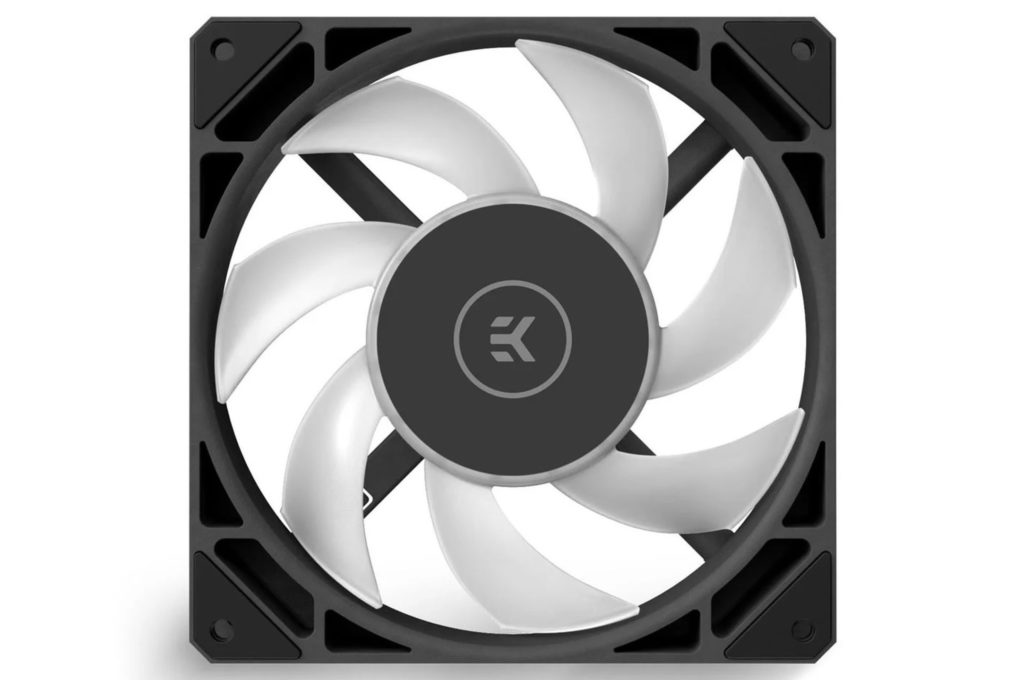

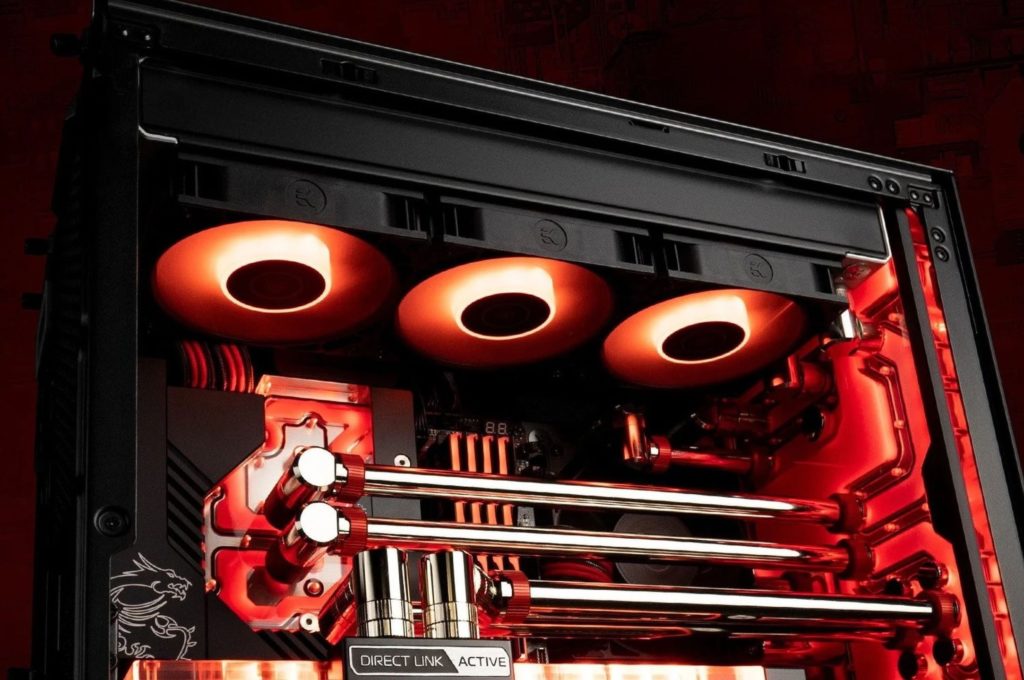
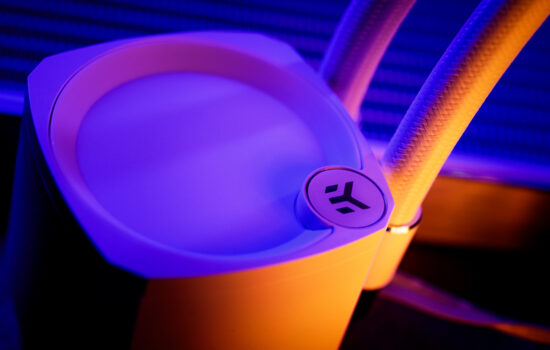

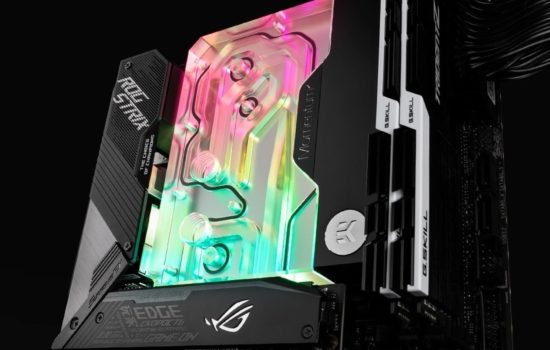



The blade tip clearances seem to be very tight, yet the material does not seem to be LCP. I am very curious how they made it work.
The gaps between the blade tips and the frame won’t actually be that narrow. In the pictures, the illusion that this might be the case is created by the fisheye effect. This is very small, but enough to get the peripheral gaps out of perspective. The distortion also shows this on the mounting holes, where the frontal view shows only a very small area of the rear holes. The lens is, in short, too close to the fan. For obvious reasons, this is done this way on purpose. I have already noticed this in the photos of the “gapless” Antec Storm 120. We already have samples of it in the editorial office and those gaps are about 2 mm.